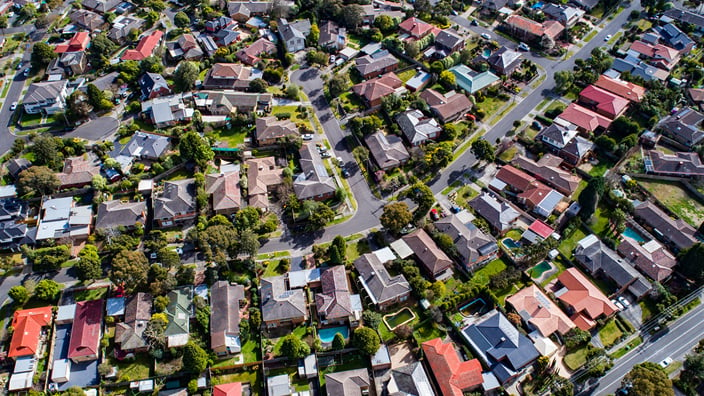

Compare Home Loan Interest Rates


Ultimate Home Loan
Use our handy Home Loan Calculators
Discover your borrowing power
Calculate your potential repayments
Compare Home Loans
Calculate your potential Stamp Duty
Compare Investment Home Loan Interest Rates

Great Rate Investment Home Loan

Ultimate Investment Home Loan
Compare Personal Loan Interest Rates

New Car Loan

Secured Personal Loan
Calculate your Personal Loan repayments
Common questions about our interest rates
Variable interest rates
A variable interest rate is a rate that fluctuates according to market conditions. Sometimes known as a floating interest rate.
So, this means that the variable interest rate that you are paying today may be different in 6 or 12 months time.
Fixed interest rates
A fixed interest rate is a rate that is not subject to market condition fluctuations, but only for a set period of time. When you choose a fixed rate, your rate will not change for the fixed period.
A fixed interest rate can give some assurance when it comes to knowing what your loan repayments will be over the set term, but it also may come with the disadvantage that if variable rates drop, your fixed rate and repayments will stay the same for the set term.
Check out Greater Bank's full range of current fixed and variable home loan interest rates below.
No one loan is perfect for everyone.
At Greater Bank, we understand that every one of our valued customers have different needs and are at different stages in their lives.
The right loan for you depends on these needs.
A variable rate loan means that the interest rate on the loan may go up and down over the loan period. This allows you to make additional or early repayments to take advantage of interest rate fluctuations.
A fixed rate loan means that the interest on the loan remains constant over a fixed period, so your repayments will stay the same. You will be able to budget for your repayments and are protected from rises in interest rates.
Still have questions? Contact a friendly Greater Bank staff member on 13 13 86 or visit your nearest branch.
We understand your circumstances may change which might require you to payout your loan completely or change your fixed rate loan by changing the loan type.
However to do so, you need to ‘break’ the terms of your loan contract. A break cost fee is intended to recover any loss that Greater Bank will incur when a customer breaks their fixed rate contract; which can happen as a result of changes in interest rates.
A break cost fee may be payable if the loan is repaid before the end of the fixed rate period, or if you switch to another loan type during the fixed rate period e.g. from a fixed rate to a variable rate.
The break cost fee is an estimate of the interest we should have received for the rest of the fixed rate period compared to the interest we would receive if we relend those funds.
We compare the interest rate you locked into the equivalent current interest rate based on the time remaining on your fixed rate period.
If fixed interest rates have increased since you locked in your fixed rate, it’s quite possible that you won’t be charged a break cost fee.
We only charge a break cost fee if we will incur a loss as a result of you breaking your fixed rate loan.
A simple version of the break cost formula is:
Break Cost = Loan Balance Owing x Interest Differential x Remaining Fixed Period
Simple example break cost calculations
Example 1
- Loan balance of $300,000 with a fixed rate of 5.00% p.a. for 5 years, which is repaid after 2 years. The time remaining for the fixed rate term locked in is 3 years and the current 3 year fixed rate is 4.00% p.a.
- Break Cost fee = $300,000 x 1.00% x 3 years
- Break Cost fee = $9,000 approximately
Example 2
- Loan balance of $300,000 with a fixed rate of 4.80% p.a. for 5 years, which is repaid after 2 years. The time remaining for the fixed rate term locked in is 3 years. The fixed rate of 4.80% p.a. is the discounted interest rate (fixed rate less a discount of 0.20%). The current 3 year fixed rate is 4.00% p.a. and the equivalent current rate after allowing for a discount of 0.20% is 3.80% p.a.
- Break Cost fee = $300,000 x 1.00% x 3 years
- Break Cost fee = $9,000 approximately
Example 3
- Loan balance of $300,000 with a fixed rate of 4.00% p.a. for 5 years, which is repaid after 2 years. The time remaining for the fixed rate term locked in is 3 years and the current 3 year fixed rate is 5.00% p.a.
- Break Cost fee = $NIL approximately
- A break cost fee would not apply as there is no loss, because we can re-lend the loan funds at a higher interest rate.
The interest charged depends on a variety of factors, such as the number of days in that month, the applicable annual interest rate and the unpaid balance of your loan.
Interest is calculated on the unpaid daily balance of your loan and is charged to the loan on a monthly basis (depending on which product you have).
The interest rate applied each day is equal to your annual interest rate, divided by 365.
A comparison rate combines the:
- loan interest rate you will be charged per year on the balance of your loan, with
- the upfront, ongoing and final loan fees and charges you will also need to pay.
The comparison rate can help you estimate the total cost of a loan over a year.
We're here to help
*Conditions, fees and charges apply to all loans. Subject to meeting Greater Bank's lending criteria.
Greater Bank, part of Newcastle Greater Mutual Group Ltd ACN 087 651 992, Australian Financial Services Licence/Australian credit licence 238273
++$2,000 cashback for loans ≥$250,000 or $2,500 cashback for loans ≥$500,000. Only one (1) Cashback Payment per eligible loan, and for first eligible loan only. Not available in conjunction with any other promotional payment. Offer may be varied or withdrawn at any time. See the full Cashback Offer Terms and Conditions. Terms, conditions, fees, charges and credit criteria apply.
~At the end of the fixed rate period customers can chose to re-fix their loan for another fixed rate period or let the loan revert to the applicable variable interest rate based on the loan and repayment type.
^Comparison rate is based on $150,000 over 25 years. WARNING: This comparison rate is true only for the example given and may not include all fees and charges. Different terms, fees or other loan amounts might result in a different comparison rate.
#Discounted rates include a discount on Home Loans of $150,000 or over and for owner occupied Home Loans with an LVR 80% or below and for investment Home Loan with an LVR 80% or below and apply to new borrowings only. Discounted rate not available for Line of Credit facilities.
+Additional costs may apply if your loan has a fixed rate.
All new interest-only home loans, attract a 0.10% p.a. margin above the applicable Principal and Interest base rate. All new Line of Credit home loans, attract a 0.10% p.a. margin above the applicable Line of Credit base rate. The all-up interest rate which includes any margins, will be set out in your credit contract. View our Terms and Conditions.
FASTRefi® is a registered trademark of First American Title Insurance Company of Australia Pty Limited ABN 64 075 279 908.
Rate City Gold Award 2024, see http://ratecity.com.au/home-loans/awards for more information


